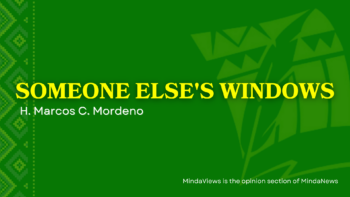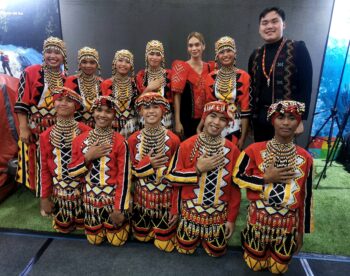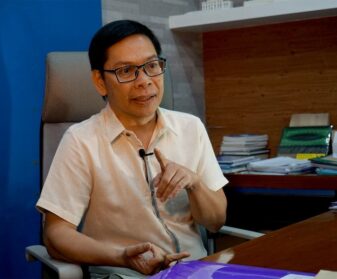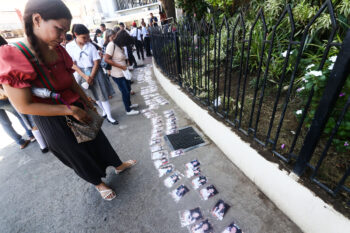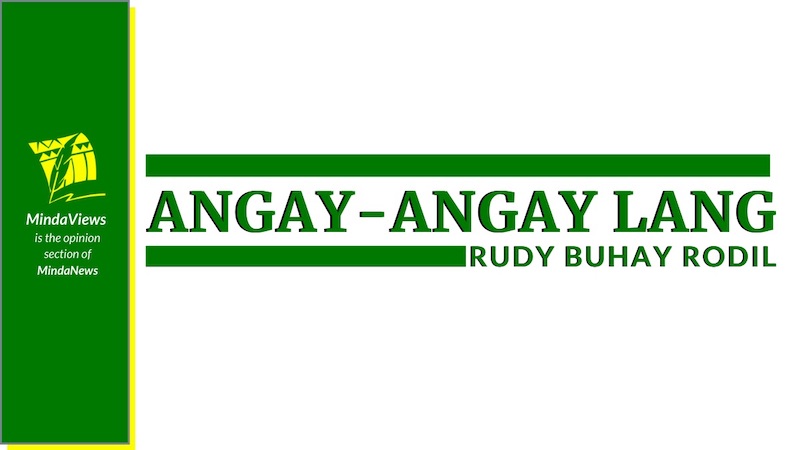 12th of 18 parts
12th of 18 parts
(This is a revised version of the book “KALINAW MINDANAW: The Story of the GRP-MNLF Peace Process, 1975-1996” published in 2000.)
Status of the Draft Organic Act
What was the status of the envisioned draft organic act at the time of adjournment? Still to be completed was the second reading of the (a) preamble, title, name, territory and declaration of principles; (b) administrative organization of the government structure; and (c) general and transitory provisions, and third reading of the entire draft organic act. The entire draft had yet to go through third reading.
The abrupt ending which was triggered by the walkout of a Commissioner from Zamboanga City erased all possibilities of any other decision. As soon as the adjournment was declared, authority for the Commission to deliberate as a body ceased altogether. There was no decision, for instance, that whatever the Commission accomplished ought to be called a draft organic act.
Was the RCC a Failure?
That the RCC-MM did not achieve its stated goal of a completed draft organic act should not be taken to mean a total failure to undertake its principal task of assisting Congress in drafting the organic act. There was much substance in the final report; the will and sentiments of the people were generally reflected in the provisions. This was something that bilateral talks could not draw out from the people. After the Mindanaw Affairs Committee in the Senate and the Local Government Committee in the House heard from the Commission, the bills for the organic act filed in both Houses were faithful reflections of what RCC-MM had accomplished. What was left of the original final report when both Houses passed the act must be considered in light of additional factors like the constitutionality of certain provisions, the contradictions among the provisions and others which the RCC-MM members did not resolve by themselves in the first place. Insertions in Congress where no RCC-MM made provision existed cannot possibly be regarded as a case of mangling.
Value of the Regional Consultative
Commission as a Political Process
While it is true that the RCC was a departure from the bilateral character of the implementation of the Tripoli Agreement, it stands as a first in modern Philippine political life. It created an opening for people’s participation, a new element, in the peace process.
From the time President Marcos consented to negotiate with the MNLF through the mediation of the Organization of Islamic Conference, more specifically the Quadripartite Commission which it created to attend to the Bangsamoro problem, up to the continuation of the same process in the Aquino administration, one will immediately see the bilateral character of the talks.
A most basic limitation of the bilateral process is the automatic exclusion of the millions of people whose very lives happen to be the subject of negotiations. The introduction of the regional consultative commission in the Constitution and the specific instructions of R.A. 6649 for the commission to conduct public consultations constitute a radical departure from this bilateral approach. As interpreted by the Office of the President and later confirmed in R.A. 6649 by Congress, each of the 27 congressional districts would be represented in the regional consultative commission, and these in turn were balanced with sectoral representatives.
For the first time in modern Philippine political history, we have gathered together representatives from Lumads, Muslims and Christians with a constitutional mandate to thresh out a modus vivendi among themselves in an autonomous region. The public consultations they were bound by law to conduct prior to or as a pre-requisite to substantive deliberations further insured that popular sentiments would be heard and transmitted to the plenary deliberations. Then from the RCC-MM, the work is passed on to Congress for final enactment into law. As soon as the President signs the organic act into law, it is sent back to the people for judgment in a plebiscite. The cycle from-the-people-to-the-people is completed. The RCC-MM was in effect part of an entire cycle of a peacemaking process.
The public consultations and other public forums on the organic act prior to the plebiscite have brought to the surface popular prejudices and perceptions among Muslims, Lumad and Christians which concerned educators and church leaders cannot help but respond to positively. These mutual perceptions have been properly quantified in earlier researches but they have yet to be utilized systematically as takeoff points for dialogues and workshop-seminars organized for the purpose of transforming the social atmosphere into something more harmonious and healthy to all concerned.
November Plebiscite
The plebiscite of November 19, 1989 resulted in the four Muslim-dominated provinces of Maguindanao, Lanao del Sur, Sulu and Tawi-Tawi voting overwhelmingly for inclusion in the Autonomous Region in Muslim Mindanaw. The eight predominantly Christian provinces of Davao del Sur, South Cotabato, Sultan Kudarat, Cotabato, Lanao del Norte, Zamboanga del Sur, Zamboanga del Norte, Basilan and Palawan chose, also overwhelmingly, to be excluded from it. The Lumad constitute only five percent of the total population of the 13 provinces, their vote could not really tilt the balance for or against autonomy. The only exception to the pattern were the predominantly Muslim areas of Basilan and the Islamic City of Marawi. (See Table 1 below.)
Table 1
ARMM Plebiscite Results
19 November 1989
| Province/City | Total Registered Voters | Turnout (in %) | Yes Votes | % of Total Yes Votes Cast | No Votes | % of Total No Votes Cast |
| Lanao del Sur | 237,076 | 71.37 | 125,338 | 74.08 | 43,855 | 25.92 |
| Maguindanao | 267,824 | 45.70 | 76,717 | 62.68 | 45,670 | 37.32 |
| Sulu | 233,181 | 57.96 | 99,911 | 73.92 | 35,245 | 26.08 |
| Tawi-Tawi | 99,039 | 56.26 | 40,596 | 72.86 | 15,125 | 27.14 |
| Basilan | 103,272 | 55.40 | 20,924 | 36.57 | 36,286 | 63.42 |
| Cotabato | 280,624 | 50.35 | 26,734 | 18.92 | 114,568 | 81.08 |
| Davao del Sur | 246,979 | 55.00 | 12,986 | 9.56 | 122,851 | 90.44 |
| Lanao del Norte | 175,751 | 70.31 | 46,892 | 37.95 | 76,682 | 62.05 |
| Palawan | 164,789 | 54.48 | 8,162 | 9.09 | 81,617 | 90.91 |
| South Cotabato | 316,043 | 52.22 | 26,198 | 15.87 | 138,841 | 84.13 |
| Sultan Kudarat | 153,589 | 49.76 | 5,601 | 7.33 | 70,827 | 92.67 |
| Zamboanga del Norte | 266,191 | 53.58 | 5,872 | 4.12 | 136,766 | 95.88 |
| Zamboanga del Sur | 405,392 | 55.83 | 14,543 | 6.42 | 211,782 | 93.57 |
| Cotabato City | 58,184 | 20.29 | 3,356 | 28.43 | 8,449 | 71.57 |
| Dapitan City | 28,392 | 69.63 | 462 | 2.34 | 19,307 | 97.66 |
| Dipolog City | 39,532 | 62.87 | 845 | 3.40 | 24,009 | 96.60 |
| Gen. Santos City | 103,549 | 40.37 | 8,223 | 19.67 | 33,577 | 80.33 |
| Iligan City | 108,432 | 59.05 | 2,044 | 3.19 | 61,983 | 96.81 |
| Marawi City | 40,269 | 56.13 | 10,399 | 46.01 | 12,204 | 53.99 |
| Pagadian City | 49,188 | 50.67 | 4,774 | 19.15 | 20,149 | 80.55 |
| P. Princesa City | 45,155 | 51.11 | 3,283 | 14.23 | 19,796 | 85.77 |
| Zamboanga City | 177,533 | 53.77 | 5,299 | 5.55 | 90,152 | 94.45 |
| TOTAL | 2,762,864 | 206,597 | 1,279,846 |
This pattern almost faithfully reflected the popular sentiments of the people in the public consultations conducted by the Commissioners of the Regional Consultative Commission, that basically, the Muslim intensely identify with autonomy, and the Christians, just as intensely, could not identify with it.
Studies and researches or surveys reveal exactly the same pattern. We have had several so far. The most systematic and extensive of these studies, already cited earlier, were those made in 1987 by the consortium of universities in Mindanaw, namely, Xavier University in Cagayan de Oro, Ateneo de Davao University in Davao City, Notre Dame University in Cotabato City, Western Mindanaw State University in Zamboanga City and Mindanaw State University in Islamic City of Marawi. We present an excerpt here from Table 13, C of the reports of Marilou Palabrica-Costello, “Autonomy for Muslim Mindanaw; A Survey-Study,” and Datumanong A. Sarangani, “Perceptions of Opinion Leaders on Autonomy for Muslim Mindanaw: A Preliminary Study.” We have adopted the same headings “Christian”, “Muslim” and “Tribal”. (See Table 2 below.)
Table 2
Would you like your municipality to be part of the proposed Muslim Autonomous Region?
| Province / City | General Responses (in %) | Opinion Leaders (in %) | ||||
| Christian | Muslim | Tribal | Christian | Muslim | Tribal | |
| Yes | 1.4 | 96.0 | 7.5 | 6.0 | 90.4 | 22.7 |
| No | 98.6 | 4.0 | 92.5 | 94.0 | 9.6 | 77.3 |
What is also revealed in these studies which unfortunately we cannot cover here are the reasons given by Christians for their negative vote. Their unwillingness to be “dominated” by Muslims is followed by a long list of biases against Muslims. If one had visions of Muslim-Christian-Lumad unity, reading through these studies can be both enlightening — because of the wealth of excellent data, and depressing because of an equally abundant evidence of Christian biases against Muslims and vice versa. In the final analysis the data should serve as a very concrete starting point, as we noted earlier, for peace advocates and social reformers who dream of unity among the tri-people (Lumad-Muslim-Christian settlers) of Mindanaw.
The population statistics of the 13 provinces in the 1990 census are also valuable for our scrutiny because they serve as a quick reference. For purposes of comparison this is the nearest population data we have to the 1989 referendum. (See Table 3 below) The results of the referendum followed the same pattern as the population size. That Muslims generally voted in favor of autonomy and non-Muslims generally voted to be excluded from it indicate quite clearly that the choice had apparently very little to do with the merit of the Organic Act. The case of Marawi City and Basilan voting against their inclusion is not so easy to explain.
Table 3
Summary Of Islamized And Lumad Populations And Other Identifiable Indigenous Inhabitants In The Thirteen Provinces And Nine Cities Based On Mother Tongue. 1990 Census
| PROVINCE | TOTAL | ISLAMIZED | % | LUMAD | % | OTHERS | % |
| Lanao del Sur | 598,800 | 557,003 | 93.02 | 487 | 0.08 | 86 | 0.01 |
| Maguindanao | 756,878 | 484,292 | 63.99 | 2,470 | 0.33 | 117,893 | 15.58 |
| Sulu | 468,856 | 457,866 | 97.66 | 867 | 0.18 | 872 | 0.19 |
| Tawi-Tawi | 227,731 | 210,063 | 92.24 | 48 | 0.02 | 2,676 | 1.18 |
| Basilan | 208,006 | 166,110 | 79.86 | 53 | 0.34 | 34,409 | 16.54 |
| Cotabato | 763,149 | 111,753 | 14.64 | 31,522 | 4.13 | 11,985 | 1.57 |
| Davao del Sur | 1,478,723 | 23,990 | 1.62 | 178,474 | 12.07 | 16,271 | 1.10 |
| Lanao del Norte | 613,259 | 134,947 | 22.00 | 628 | 0.10 | 1,195 | 0.19 |
| Palawan | 524,493 | 29,696 | 5.66 | 11,943 | 2.28 | 191,300 | 36.47 |
| South Cotabato | 1,071,135 | 52,497 | 4.90 | 124,726 | 11.64 | 6,798 | 0.63 |
| Sultan Kudarat | 435,454 | 80,709 | 18.53 | 13,961 | 3.21 | 10,931 | 2.51 |
| Zamboanga del Norte | 676,014 | 39,486 | 5.84 | 59,081 | 8.74 | 5,446 | 0.80 |
| Zamboanga del Sur | 1,540,299 | 168,800 | 10.96 | 78,080 | 5.07 | 234,070 | 15.20 |
| Cotabato City | 126,636 | 59,813 | 47.23 | 92 | 0.35 | 6,272 | 23.6 |
| Dapitan City | 60,140 | 51 | 0.08 | 59 | 0.1 | 166 | 0.28 |
| Dipolog City | 79,545 | 257 | 0.32 | 407 | 0.51 | 216 | 0.27 |
| Gen Santos City | 249,678 | 10,671 | 4.27 | 6,206 | 2.49 | 2,805 | 1.12 |
| Iligan City | 225,935 | 7,784 | 3.45 | 140 | 0.06 | 864 | 0.38 |
| Marawi City | 91,204 | 86,150 | 94.46 | 20 | 0.02 | 10 | 0.01 |
| Pagadian City | 105,694 | 4,152 | 3.93 | 2,981 | 2.82 | 350 | 0.33 |
| P. Princesa City | 89,808 | 744 | 0.83 | 603 | 0.67 | 19,806 | 22.1 |
| Zamboanga City | 440,874 | 101,239 | 22.96 | 1,790 | 0.41 | 218,163 | 49.5 |
| Note: The city population is included in the total of their respective provinces. | |||||||
The Autonomous Region in Muslim Mindanaw was duly set in place as prescribed by the 1987 Constitution after the plebiscite and the election of officials. But as far as the MNLF was concerned, the Tripoli Agreement had yet to be implemented.
The next two years were relatively quiet.
Another Visit from the OIC
On the second week of November 1991, towards the end of the Aquino administration, Ambassador Ibrahim Bakr, Assistant Secretary General for Political, Minority Affairs of the OIC paid a call to President Aquino. He came away with the impression of a renewed negotiation. The third paragraph of Resolution No. 11/5-P(IS) On the Question of Muslims in Southern Philippines of the 6th Islamic Summit Conference held in Dakar, Senegal, on December 9-12, 1991 expressed its satisfaction to the Government of the Philippines, the Moro National Liberation Front, and the Moro Islamic Liberation Front for their “agreement to conduct negotiations” at the headquarters and under the auspices of the Organization of the Islamic Conference. On the same occasion, an ARMM representative was invited to attend the opening ceremonies; Indonesia and Bangladesh were also added to the OIC Ministerial Committee, now known as the Committee of Six. The decision to increase the members to six was made during the 19th ICFM held on July 31 to August 5, 1990; Indonesia was elected to the Chair at the 21st ICFM in Karachi, Islamic Republic of Pakistan in April 1993.
The ICFM at this 21st Conference exuded a particularly positive note with respect to the just concluded exploratory talks. It welcomed the “The Memorandum of Mutual Understanding” which concluded the first exploratory talks between the Government of the Republic of the Philippines and the Moro National Liberation Front in Tripoli, Libyan Jamahiriyah, October 3-5, 1992, and also the “Statement of Understanding” reached by the same parties at Cipanas, West Java in Indonesia on April 14-15, 1993 which set the agenda and the schedule for the formal peace talks. Only the venue remained to be settled.
The peace negotiation was back on track again. (MindaViews is the opinion section of MindaNews. A peace specialist, Rudy Buhay Rodil is an active Mindanao historian and peace advocate)
Tomorrow: They Are Not Our Enemy


